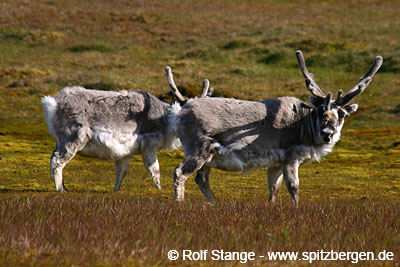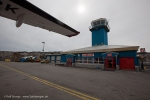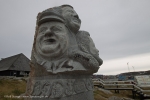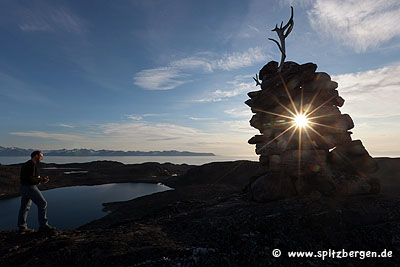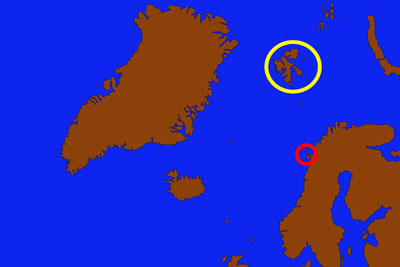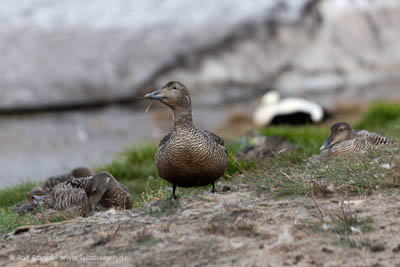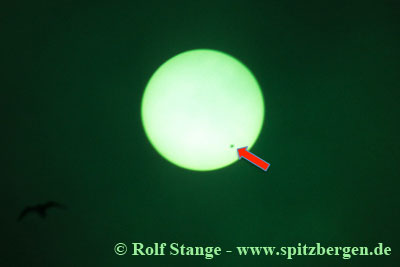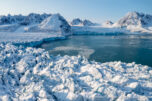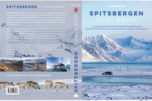-
current
recommendations- Liefdefjord
New page dedicated to one of Spitsbergen's most beautiful fjords. Background information and many photos.
- New Spitsbergen guidebook
The new edition of my Spitsbergen guidebook is out and available now!
- Liefdefjord
New page dedicated to one of Spitsbergen's most beautiful fjords. Background information and many photos.
Page Structure
-
Spitsbergen-News
- Select Month
- May 2025
- April 2025
- March 2025
- February 2025
- January 2025
- December 2024
- November 2024
- October 2024
- September 2024
- August 2024
- July 2024
- June 2024
- May 2024
- April 2024
- March 2024
- February 2024
- January 2024
- December 2023
- November 2023
- October 2023
- September 2023
- August 2023
- July 2023
- June 2023
- May 2023
- April 2023
- March 2023
- February 2023
- January 2023
- December 2022
- November 2022
- October 2022
- September 2022
- August 2022
- July 2022
- June 2022
- May 2022
- April 2022
- March 2022
- February 2022
- January 2022
- December 2021
- November 2021
- October 2021
- September 2021
- August 2021
- July 2021
- June 2021
- May 2021
- April 2021
- March 2021
- February 2021
- January 2021
- December 2020
- November 2020
- October 2020
- September 2020
- August 2020
- July 2020
- June 2020
- May 2020
- April 2020
- March 2020
- February 2020
- January 2020
- December 2019
- November 2019
- October 2019
- September 2019
- August 2019
- July 2019
- June 2019
- May 2019
- April 2019
- March 2019
- February 2019
- January 2019
- December 2018
- November 2018
- October 2018
- September 2018
- August 2018
- July 2018
- June 2018
- May 2018
- April 2018
- March 2018
- February 2018
- January 2018
- December 2017
- November 2017
- October 2017
- September 2017
- August 2017
- July 2017
- June 2017
- May 2017
- April 2017
- March 2017
- February 2017
- January 2017
- December 2016
- November 2016
- October 2016
- September 2016
- August 2016
- July 2016
- June 2016
- May 2016
- April 2016
- March 2016
- February 2016
- January 2016
- December 2015
- November 2015
- October 2015
- September 2015
- August 2015
- July 2015
- June 2015
- May 2015
- April 2015
- March 2015
- February 2015
- January 2015
- December 2014
- November 2014
- October 2014
- September 2014
- August 2014
- July 2014
- June 2014
- May 2014
- April 2014
- March 2014
- February 2014
- January 2014
- December 2013
- November 2013
- October 2013
- September 2013
- August 2013
- July 2013
- June 2013
- May 2013
- April 2013
- March 2013
- February 2013
- January 2013
- December 2012
- November 2012
- October 2012
- September 2012
- August 2012
- July 2012
- June 2012
- May 2012
- April 2012
- March 2012
- February 2012
- January 2012
- December 2011
- November 2011
- October 2011
- September 2011
- August 2011
- May 2011
- April 2011
- March 2011
- February 2011
- January 2011
- December 2010
- November 2010
- September 2010
- August 2010
- July 2010
- June 2010
- May 2010
- April 2010
- March 2010
- February 2010
- November 2009
- October 2009
- August 2009
- July 2009
- June 2009
- May 2009
- April 2009
- March 2009
- February 2009
- January 2009
- December 2008
- November 2008
- October 2008
- August 2008
- July 2008
- June 2008
- May 2008
- April 2008
- March 2008
- February 2008
- April 2000
- Select Month
-
weather information
-
Newsletter

| Guidebook: Spitsbergen-Svalbard |
Home → June, 2012
Monthly Archives: June 2012 − News & Stories
Reindeer population has doubled since 1994
Local reindeer populations in several important valleys near Longyearbyen such as Semmeldalen, Colesdalen and Adventdalen have doubled since 1994, and this trend is believed to apply also to other parts of the Spitsbergen archipelago. The reason is thought to be a 2 degrees increase of summer temperatures which have led to stronger growth of vegetation. On the other hand, instable weather patterns have led to a higher frequency of bad years with starvation and a loss of parts of the population. The average weight of the individual animals has decreased slightly (about 1 kg). 2012 is likely to become the fourth bad year for reindeer since the beginning of the observations, which include population surveys and the examination of reindeer jaws which are delivered by hunters.
Spitsbergen-reindeer: larger population, thinner individuals since 1994.
Source: Norwegian Polar Institute
Aasiaat (Disko Bay, Westgreenland), 13th June, 2012
While the rest of the world was watching 22 Dutch and Germans running after a black-and-white ball, I was on my own following a black-and-white bird (a male snow bunting) in Aasiaat. Here some impressions of this first day in west Greenland, soon there will be more.
aasiaat (gallery)
- gallery anchor link: #gallery_268
Click on thumbnail to open an enlarged version of the specific photo.
Beginning of arctic shipping season 2012
The midnight sun is shining over Spitsbergen’s fjords since late April and most of the birds have started their breeding business by now. Most tourist ships that sail Spitsbergen’s coastal waters, from large cruise ships to small sailing boats, are now on their way up north, some are already there.
The owner of this website is also soon on his way north and will be there (Spitsbergen and west Greenland) until late September. The news section will accordingly be updated less frequently than during recent months, but there will be updates and news of importance will, if necessary, be posted with a little delay – but they will appear here.
The travel blog site (triplogs, photo galleries) of trips of the 2012 season will soon be updated regularly until late September/early October. So – please visit again!
Spitsbergen under the midnight sun: the sailing season in the high norht has started.
Svolvær – or Svalbard…?
An American lady was more than just a bit surprised when she found out where she actually was in the airport of Longyearbyen. She had intended to travel up to Svolvær, the main settlement in Lofoten, a group of islands off the coast of north Norway.
The reason for the not so little detour was the similarity between the words “Svolvær” and “Svalbard”, as the Norwegians commonly call Spitsbergen. The lady had asked the travel agency for a ticket to Svolvær but got one to Svalbard, without anyone taking notice of the difference. She was a bit surprised about the passport control in Tromsø, but did not pay any further attention to it.
She said she enjoyed her 2 days in the high arctic after the first surprise, until a seat on a flight back was available.
Svalbard (yellow circle) and Svolvær (red): a little difference.
Source: Svalbardposten (2112)
Eider duck news
Eider duck news: Biologists have revealed some interesting facts about common eider ducks in Spitsbergen. They were negatively affected by egg and down feather collecting until they were protected in 1963. Since 1973, important breeding colonies, mostly on small islands, may not be visited anymore without special permission, which is only issued to scientists and occasionally professional local down collectors. Nevertheless, numbers of breeding common eiders at colonies in Kongsfjorden have remained stable, but did not increase.
Another colony in Bellsund shows however pronounced growth: this is the colony on the small island Eholmen, where a local Norwegian trapper has collected down over years. Careful collecting does not have any negative impact on the breeding success. Protection from predators such as polar bears and foxes which is provided by the trapper seems to have a positive impact, making the site attractive for breedings ducks. The numbers of breeders have consequently increased significantly.
Common eider ducks may possibly also benefit from a warming climate, for example from an early break-up of fjord ice which makes breeding colonies on islands inaccessible for the polar fox, which is generally an important predator.
Breeding common eiders in Adventdalen near Longyearbyen.
Source: NINA.
Passage of Venus on June 6th
Astronomers are looking forward to a very rare event in the early morning hours of June 06th: a passage of Venus. Observation opportunities will be excellent in northern Scandinavia and in Spitsbergen. Every 130 years there are 2 transits of Venus with a few years between them. The last one was in 2004. The current one will be the last chance to observe such an event until December 2117.
You wouldn’t see if if you didn’t kow about it, but it is a very important and spectacular moment for astronomers. Historically, transits of Venus were very important for science, as the simultaneous observation of a transit from different places on Earth allowed, for example, the distance to the sun to be calculated.
If you want to see something, you will need – next to good weather – at least binocular and sufficient eye protection. If you try to observe it withour proper eye protection, you risk to lose your eyesight immediately and permanently!
Transit of Venus, Iceland 2004. Venus is visible as a dark dot (arrow). The foto was taken with binoculars and welding glasses.
News-Listing live generated at 2025/May/02 at 21:43:35 Uhr (GMT+1)
